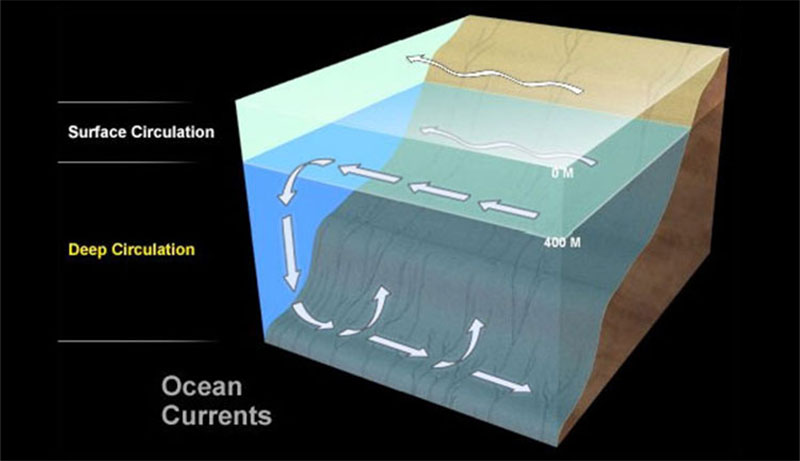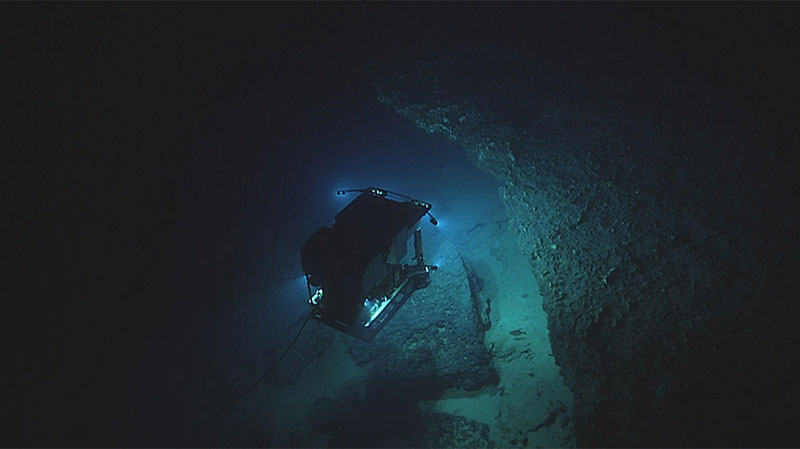What causes ocean currents?
Ocean currents can be caused by wind, density differences in water masses caused by temperature and salinity variations, gravity, and events such as earthquakes or storms.

Currents are cohesive streams of seawater that circulate through the ocean. Some are short-lived and small, while others are vast flows that take centuries to complete a circuit of the globe. There are two distinct current systems in the ocean—surface circulation, which stirs a relatively thin upper layer of the sea, and deep circulation, which sweeps along the deep-sea floor. Download image (jpg, 38.6 KB).
Surface currents in the ocean are driven by global wind systems that are fueled by energy from the Sun. Patterns of surface currents are determined by wind direction, Coriolis forces from the Earth’s rotation, and the position of landforms that interact with the currents. Surface wind-driven currents generate upwelling currents in conjunction with landforms, creating deepwater currents.
Currents may also be caused by density differences in water masses due to temperature (thermo) and salinity (haline) variations via a process known as thermohaline circulation. These currents move water masses through the deep ocean, taking nutrients, oxygen, and heat with them. The vertical motion of tides near the shore can also cause water to move horizontally, creating what are known as tidal currents.
Occasional events such as huge storms and underwater earthquakes can also trigger serious ocean currents, moving masses of water inland when they reach shallow water and coastlines. Earthquakes may also trigger rapid downslope movement of water-saturated sediments, creating strong turbidity currents.
Finally, when a current that is moving over a broad area is forced into a confined space, it may become very strong. On the ocean floor, water masses forced through narrow openings in a ridge system or flowing around a seamount may create currents that are far stronger than in the surrounding water, affecting the distribution and abundance of organisms (as well as the scientists and their equipment seeking to study these organisms!).


